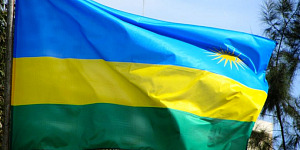Fitch Ratings has affirmed Rwanda's Long-Term Foreign-Currency Issuer Default Rating (IDR) at 'B+' with a Stable Outlook.
Key Rating Drivers
Rwanda's 'B+' rating reflects its twin fiscal and current account deficits, high public and external indebtedness and low income per head. These weaknesses are tempered by stable macroeconomic performance, marked by high potential growth and relatively low inflation and underpinned by strong governance and a conducive business environment.
The government estimates that its budget deficit widened to RWF445 billion (5.2% of GDP) on a cash basis in the fiscal year ending June 2019 (FY19), from 5% of GDP in FY18. This is well above the 'B' category medians and largely reflects high capital spending. Arrears clearance is the primary factor pushing the cash deficit to over 6% of GDP in our forecast for FY20, against the backdrop of continued high capital spending and a medium-term trend of declining budgetary grants. Net lending is also expected to pick up, reflecting higher support for export promotion activities; net lending also includes support to Rwandair.
The authorities intend to keep the five-year rolling average fiscal deficit below 5.5% of GDP, as targeted in the new three-year Policy Coordination Instrument with the IMF. Under our forecasts, the five-year average deficit will hit 5.5% of GDP in FY21.
The broader public sector is a source of fiscal risk, given the government's active role in driving economic development. In the electricity sector, planned investments in grid expansion and government guarantees on power purchase agreements may necessitate an increase in government support. Budget figures already include around 1.2% of GDP per year in support to Rwandair in the form of net lending and transfers, and around 1.4% of GDP in support to the electricity sector in the form of transfers and capital spending (in some scenarios evaluated by the World Bank, this rises to 4% of GDP by FY21).
We estimate that government gross debt (at face value) rose to around 52% of GDP in FY19, up from 50% of GDP in FY18, including guaranteed debt of around 7% of GDP. We expect the debt ratio to reach 55% of GDP in FY20 and continue rising over the medium term. The government has a self-imposed debt ceiling of 50% of GDP in present value terms. In practice this is only a loose constraint as the present value of government debt is currently estimated at around 20% of GDP below face value due to concessionality. We assume that the government will be able to meet the majority of its borrowing requirements with external concessional loans linked to development projects, despite a gradual move towards market financing.
We expect the current account deficit to widen to above 10% of GDP in 2019-2020, as a pick-up in domestic growth further boosts imports, while external interest payments mount and grant income moderates. This would be well above the 'B' medians, and up from an outturn of 7.9% of GDP in 2018. The higher deficit will largely be financed by government project-linked borrowing and foreign direct investment, pushing net external debt further above the 'B' medians, from a forecast 44% of GDP in 2019. We expect that reserve coverage will edge down to under four months of external payments (still close to the 'B' medians).
Rwanda's GDP per head, which we forecast at around USD790 in 2019, remains significantly below the current 'B' category median (around USD3,200 per head), despite strong macroeconomic performance and significant development gains since the end of the Civil War in 1994. Development needs will create persistent pressure on the public finances over the medium term. The government's National Strategy for Transformation aims to more than double GDP per head by 2030.
Rwanda's medium-term GDP growth outlook of 7%-8% is well above that of 'B' and 'BB' peers, reflecting population growth, public investment, and growth-oriented policies promoting import substitution and tourism. Although strong performance continued into 1Q19 (8.4% yoy), risks are tilted to the downside, in our view. The impulse from additional government spending will fade, and in the absence of more fiscal expansion, sustaining growth at these levels will depend on the economy's ability to harness domestic and foreign private investment. The spread of Ebola virus from the neighbouring Democratic Republic of the Congo could undermine Rwanda's tourism sector, which accounts for around 4% of GDP of external receipts, although so far there have been no reported cases in Rwanda.
All-Rwanda consumer price inflation averaged -0.3% yoy in 2018, driven by lower food prices in rural areas. Headline urban inflation was higher at 1.4%, or 2.4% excluding food and energy. All-Rwanda inflation picked up to 1.6% yoy in July 2019. Subdued inflation allowed the National Bank of Rwanda (NBR) to lower the Central Bank Rate to 5% from 5.5% in May 2019. Under its new interest-based monetary policy framework, NBR is targeting inflation of 5% (within a band of +/- 3pp), which we expect will be reached in 2020-2021.
Rwanda scores better than 53% of all countries on World Bank Governance Indicators, despite weak performance on the Voice and Accountability pillar. This compares favourably with the current 'B' category median of 32%, and reflects continuous improvements in all but two of the past 20 years. Among other factors this reflects exceptionally strong performance on the Ease of Doing Business ranking, where Rwanda ranks 29th globally and 2nd in Africa. These strengths support the outlook for foreign investment and aid inflows and increase confidence in the government's ability to respond to macroeconomic shocks.





































